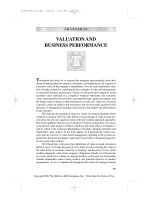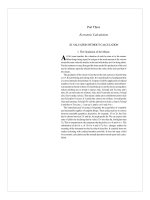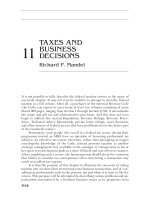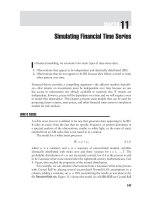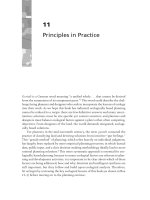Group counseling strategies and skills chapter 11
Bạn đang xem bản rút gọn của tài liệu. Xem và tải ngay bản đầy đủ của tài liệu tại đây (309.76 KB, 13 trang )
Copyright © 2012 Brooks/Cole, a division of Cengage Learning, Inc.
Introducing, Conducting,
and Processing Exercises
©2016. Cengage Learning. All rights reserved.
Chapter 11
Inform the members of the purpose and
procedures
Avoid confusing directions
Avoid lengthy directions
Copyright © 2012 Brooks/Cole, a division of Cengage Learning, Inc.
Set the right tone
©2016. Cengage Learning. All rights reserved.
Introducing an Exercise
Allow members to not participate
Be prepared for emotional reactions
Change or stop an exercise if not going well
Inform members of the time, if appropriate
Copyright © 2012 Brooks/Cole, a division of Cengage Learning, Inc.
Make sure members follow instructions
©2016. Cengage Learning. All rights reserved.
Conducting an Exercise
Participate if it will be helpful
Don’t participate if the members are going to
focus on your comments
Never participate if you are working on your
unfinished business
Copyright © 2012 Brooks/Cole, a division of Cengage Learning, Inc.
It is always an option
©2016. Cengage Learning. All rights reserved.
Leader Participation in Exercises
Copyright © 2012 Brooks/Cole, a division of Cengage Learning, Inc.
Understanding the processing of exercises is
essential because it is by far the most important
phase of any exercise
Always consider the purpose of the exercise when
processing
Give thought to the various ways of processing
before using an exercise
Anticipate potential problems
©2016. Cengage Learning. All rights reserved.
Processing an Exercise
To stimulate members to delve deeper into
thoughts and feelings
To stimulate sharing and discussion related to
the group dynamics and group process
Copyright © 2012 Brooks/Cole, a division of Cengage Learning, Inc.
To stimulate sharing and discussion about topics
or issues
©2016. Cengage Learning. All rights reserved.
Goals of Processing
Copyright © 2012 Brooks/Cole, a division of Cengage Learning, Inc.
A leader should make sure there is adequate
time to process the exercise to the depth desired
Novice leaders move on to something else and
don’t allow enough time for processing
Recognize when the exercise has served its
purpose…then move on
©2016. Cengage Learning. All rights reserved.
Time Needed for Adequate
Processing
In dyads or triads
Through writing
Comments from the entire group
Any combination of the preceding four ways
Copyright © 2012 Brooks/Cole, a division of Cengage Learning, Inc.
Through rounds
©2016. Cengage Learning. All rights reserved.
Ways of Processing
“What feelings were stirred up for you?”
“How can you use this exercise to help you in
your life?”
Copyright © 2012 Brooks/Cole, a division of Cengage Learning, Inc.
“What insights did you get from doing this?”
©2016. Cengage Learning. All rights reserved.
Kinds of Processing Questions
Other times, the discussion of the exercise leads
to deeper work and the leader may want to shift
to working on the issues that came up as a
result of processing the exercise.
Copyright © 2012 Brooks/Cole, a division of Cengage Learning, Inc.
Sometimes discussing the exercise is the
processing.
©2016. Cengage Learning. All rights reserved.
Time Spent Discussing the Actual
Exercise
Copyright © 2012 Brooks/Cole, a division of Cengage Learning, Inc.
Exercises often cause members to delve deeply
into themselves. The leader decides if he or she
wants to focus on one member or the entire
group. It depends on the group and the issues.
Often it is best to focus on the entire group and
then on one or two members who may wish to
process more deeply.
©2016. Cengage Learning. All rights reserved.
Focusing on One Member or on the
Entire Group
Copyright © 2012 Brooks/Cole, a division of Cengage Learning, Inc.
Inexperienced leaders hold the focus too long on
one person, often the first one to speak.
It is usually best to hear from all or the majority
of members before focusing on one member
Inexperienced leaders shift the focus too
frequently, thus preventing the group to go very
deep.
©2016. Cengage Learning. All rights reserved.
Holding and Shifting the Focus
The leader has to decide if the value is in
spending the majority of the time in the past or in
how the past is currently effecting the members.
Copyright © 2012 Brooks/Cole, a division of Cengage Learning, Inc.
Some exercises are focused on the past—
childhood, early memories, etc. These
exercises are valuable.
©2016. Cengage Learning. All rights reserved.
Processing Past-Centered
Exercises
